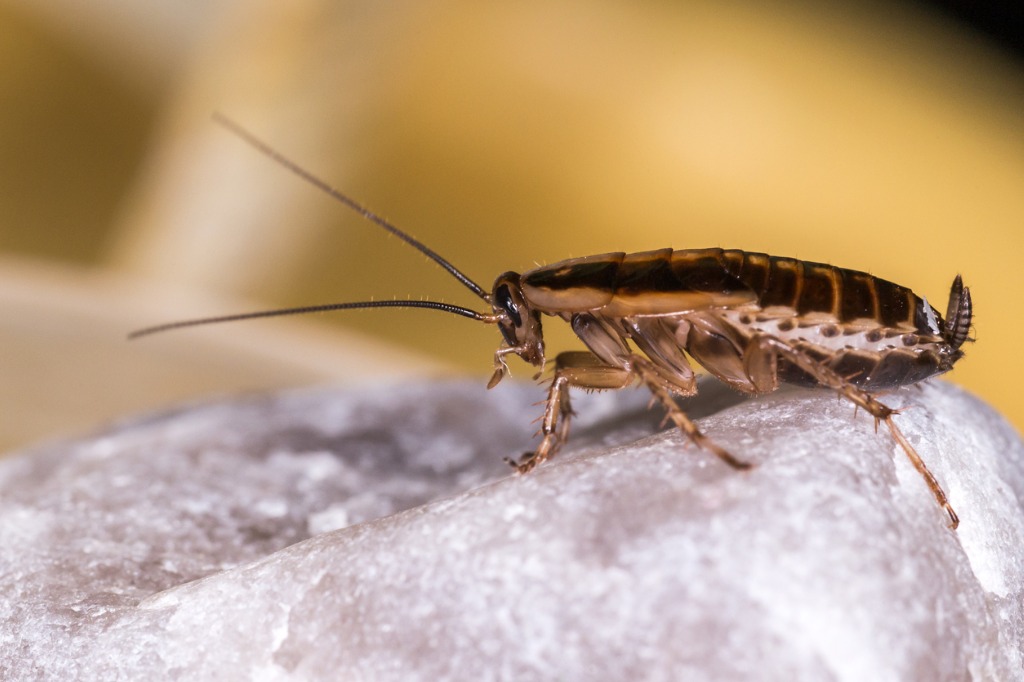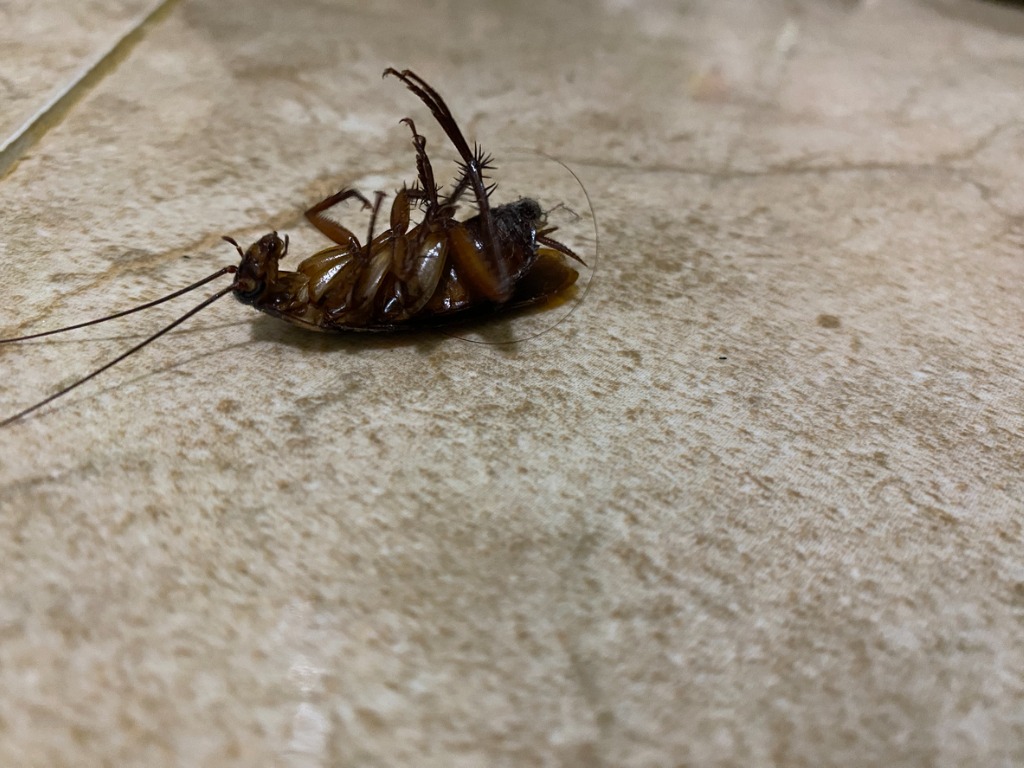Cockroaches – the nocturnal creepers that send shivers down our spines. These resilient pests have been around for millions of years, surviving even the most extreme conditions. But fear not, for humanity has waged a war against these unwelcome guests since time immemorial. In this comprehensive article, we will embark on an intriguing journey through the world of cockroach remedies, exploring everything from ancient folklore to cutting-edge scientific breakthroughs. So gather your courage and join us as we delve into the secrets of banishing these six-legged intruders once and for all.
Key takeaways
- Common signs of a cockroach infestation include dark droppings, musty odors, and live cockroaches at night.
- Prevent infestations by maintaining cleanliness, sealing entry points, and fixing leaks.
- Cockroaches pose health risks due to allergens, pathogens, and food contamination.
- Non-chemical approaches like essential oils, natural repellents, and physical barriers can deter cockroaches.
- Chemical solutions, including baits and sprays, are effective but should be used with caution.
- Integrated Pest Management combines non-chemical and chemical methods for long-term control.
What are the most common signs of a cockroach infestation?
The most common signs of a cockroach infestation include the presence of small, dark droppings resembling coffee grounds or pepper, musty or oily odors in affected areas, discarded cockroach egg casings, and live cockroaches seen primarily during nighttime hours. Additionally, you may notice small, irregular-shaped fecal smears on surfaces, chewed or damaged packaging, and evidence of cockroach activity in warm, dark, and hidden areas like behind appliances, in cabinets, or under sinks. Identifying and addressing these signs promptly is crucial to prevent a worsening infestation.
How can I prevent cockroach infestations in my home?

To prevent cockroach infestations in your home, maintain a clean and uninviting environment by regularly cleaning up crumbs and food residue, sweeping and vacuuming floors, and keeping food stored in airtight containers. Seal cracks and crevices in walls, floors, and windows to limit entry points, and fix any plumbing leaks promptly to eliminate water sources that attract cockroaches. Minimize clutter, as it provides hiding spots, and consider using cockroach traps or baits as a preventive measure, especially in vulnerable areas. Regularly inspect your home for signs of cockroach activity, and if you suspect an infestation, take immediate action to address it.
Understanding Cockroaches
Cockroach biology and habits
Cockroaches are resilient insects with flattened, oval-shaped bodies, long antennae, and, in some species, wings. They thrive in diverse environments, including homes, restaurants, and even sewers, favoring warm and humid conditions. Typically nocturnal, they emerge at night to forage for food, which can range from scraps to paper and organic matter. Cockroaches reproduce quickly, with females producing multiple egg cases containing numerous eggs. Their lifespan varies but generally ranges from a few months to a few years.
Common cockroach species
Several cockroach species coexist with humans, with distinct characteristics. The German cockroach, small and tan with dark stripes, often invades kitchens and bathrooms. The American cockroach, one of the largest, is reddish-brown and prefers dark, damp places. Oriental cockroaches, shiny black or dark brown, are commonly found in basements and emit an unpleasant odor. Brown-banded cockroaches are smaller and sport light bands on their bodies, while smokybrown cockroaches are outdoor dwellers but may venture inside for food or shelter.
Health risks linked to cockroach presence
The presence of cockroaches can pose various health risks. Firstly, their droppings, shed skins, and saliva contain allergenic proteins that can trigger allergies and worsen asthma in susceptible individuals. Secondly, cockroaches can carry and transmit disease-causing pathogens, including salmonella, E. coli, and gastroenteritis-causing agents, due to their habit of crawling through unsanitary environments. Additionally, they can contaminate food and food preparation surfaces, potentially leading to foodborne illnesses. Moreover, in larger infestations, cockroaches emit a foul odor, contributing to an unsanitary living environment. Controlling cockroach populations and maintaining cleanliness is crucial to mitigate these health risks.
Non-Chemical Approaches

Essential oils and their effectiveness
Essential oils have gained popularity as a non-chemical method for repelling cockroaches. Certain oils, such as peppermint, eucalyptus, and lavender, are believed to have natural repellent properties due to their strong scents. These oils can be diluted with water and sprayed in areas where cockroaches are seen or suspected. While essential oils may help deter cockroaches temporarily, their effectiveness can vary, and they are generally not as potent as chemical pesticides. It’s important to note that essential oils should be used with caution, especially if you have pets or young children, as some oils can be toxic in concentrated forms.
Natural repellents and DIY recipes
Many natural substances can be used to create DIY cockroach repellents. Some common ingredients include baking soda, diatomaceous earth, and borax. Baking soda can be sprinkled in areas where cockroaches are likely to travel, as it can disrupt their exoskeleton and dehydrate them. Diatomaceous earth, a fine powder, can be applied in cracks and crevices to scratch the cockroach’s exoskeleton and desiccate them. Borax can be mixed with sugar and placed in bait stations to attract and kill cockroaches. These natural remedies can be effective when used strategically, but they may take time to yield results.
Physical barriers and preventive measures
Preventing cockroach infestations through physical barriers and preventive measures is often the most effective approach. This includes sealing cracks and gaps in walls, windows, and doors to deny cockroaches entry. Keep food stored in airtight containers and maintain a clean and dry living environment, as cockroaches are attracted to food scraps and moisture. Fix any plumbing leaks promptly, as cockroaches need water to survive. Additionally, reduce clutter in your home, as it provides hiding places for cockroaches. Regularly clean and vacuum to remove potential food sources and egg cases. Using screens on windows and doors can also help keep cockroaches out.
Chemical Solutions

Types of cockroach-specific insecticides
There are several types of insecticides specifically formulated for cockroach control. These include:
- Residual Sprays: These insecticides are applied to surfaces where cockroaches are likely to crawl, such as baseboards, cracks, and crevices. They leave a long-lasting residue that continues to kill cockroaches for an extended period.
- Aerosol Sprays: Cockroach aerosol sprays are convenient for spot treatments and can reach into cracks and voids. They often have a quick knockdown effect but may not provide long-lasting protection.
- Insecticide Dusts: These fine powders, like diatomaceous earth or boric acid, can be applied in hard-to-reach areas. They work by adhering to the cockroach’s body, absorbing moisture, and causing dehydration.
- Insect Growth Regulators (IGRs): IGRs disrupt the development of young cockroaches, preventing them from maturing and reproducing.
- Bait Gels: These are a combination of insecticide and attractive bait. Cockroaches are drawn to the bait, consume it, and then carry the insecticide back to their nests, effectively eliminating the entire colony.
Cockroach baits: how they work and placement strategies
Cockroach baits are designed to attract cockroaches with a combination of food and a slow-acting insecticide. When cockroaches consume the bait, they often return to their nests and die. Other cockroaches may consume the carcass, spreading the insecticide through the colony. Effective placement is crucial for bait success. Place baits in areas where cockroaches are active, such as kitchens and bathrooms, along baseboards, and near hiding spots. Avoid placing baits where you’ve used chemical sprays, as this can deter cockroaches from consuming the bait.
Foggers and sprays: application and safety
Foggers and aerosol sprays are a common choice for immediate cockroach control. When using these products, it’s essential to follow safety precautions:
- Read Labels: Carefully read and follow the instructions on the product label, including safety guidelines.
- Ventilation: Ensure good ventilation in the treated area by opening windows and doors. If using foggers, leave the treated area for the specified time.
- Cover or Remove Food and Utensils: Cover or remove exposed food items, dishes, and utensils before applying sprays.
- Pet and Child Safety: Keep pets and children away from treated areas until the product has dried or the area is safe for re-entry.
- Protective Gear: Wear appropriate protective gear, such as gloves and a mask, when applying aerosol sprays.
- Residual Effects: Residual sprays may leave a residue on surfaces, so be mindful of this when applying in food preparation areas.
Integrated Pest Management (IPM)
IPM principles for cockroach control
- Inspect: Begin by thoroughly inspecting your property to determine the extent of the cockroach infestation. Identify areas where they are active and potential entry points.
- Prevent: Implement preventive measures such as sealing cracks, gaps, and entry points that cockroaches use to enter your home. Maintain cleanliness by eliminating food and water sources that attract them.
- Non-Chemical: Utilize non-chemical methods like natural repellents, physical barriers, and improved sanitation. These measures discourage cockroaches without using harmful chemicals.
- Chemical: If the infestation persists, consider using targeted chemical controls such as cockroach-specific baits or low-impact insecticides. Apply them judiciously in areas with cockroach activity.
- Monitor: Regularly monitor the effectiveness of your control efforts. This helps ensure that the infestation is under control and allows you to adjust your approach as needed.
Combining non-chemical and chemical methods
- Begin with non-chemical methods as your first line of defense. These methods can significantly reduce the cockroach population and create a less hospitable environment for them.
- Only use chemical controls as a last resort if non-chemical measures are insufficient. When using chemicals, select products that are specific to cockroaches and follow safety guidelines to minimize risks.
- Maintain preventive practices even after the infestation is resolved. This includes ongoing cleanliness, sealing entry points, and reducing attractants to prevent future infestations.
Practical Cockroach Remedies
Real-life case studies and success stories
Real-life case studies highlight the effectiveness of practical cockroach remedies. In one instance, a family struggling with a persistent kitchen infestation successfully combated the issue by combining deep cleaning with targeted cockroach baits. Another case involved a restaurant owner who overcame a cockroach problem through stringent cleanliness practices and professional pest control services. These success stories underscore the value of a multifaceted approach to cockroach control, involving both non-chemical and chemical methods.
Overcoming challenges in cockroach control
Cockroach control can be challenging due to factors like resistance to chemicals, hidden nests, and persistent infestations. To address resistance, it’s crucial to rotate between different baits and insecticides. For hidden nests, choose baits that can be transported back to the colony. In severe cases, consulting pest control professionals with specialized expertise and tools can be the key to resolving persistent infestations effectively.
Maintenance tips for a cockroach-free environment
To maintain a cockroach-free environment, regular cleaning and sanitization are essential. Seal entry points, store food properly, and promptly fix any plumbing leaks. Monitoring for signs of cockroach activity and considering professional inspections and treatments as part of routine maintenance can help ensure ongoing control and prevention. By adopting these practices, you can create an environment that is inhospitable to cockroaches and minimize the risk of infestations.
Safety and Sustainability
Human and pet safety considerations
When dealing with pest control, prioritizing the safety of both humans and pets is crucial. It begins with the proper storage of pesticides, securely kept out of children’s and pets’ reach. Reading and strictly following product labels is vital to minimize health risks. Protective gear, like gloves and masks, should be worn when handling chemical pesticides. Additionally, pets should be kept away from treated areas until they are confirmed safe for re-entry. Proper disposal of pesticide containers and remnants according to local regulations is essential to prevent potential environmental contamination.
Environmental impact assessment
Pest control methods can have unforeseen environmental consequences, making it necessary to conduct thorough assessments. Start by selecting pesticides with minimal impacts on non-target species and ecosystems. To prevent pollution, adhere to best practices during application to avoid contaminating water sources, soil, and air with pesticides. Wildlife protection should also be a consideration, taking care not to harm beneficial species in the process of pest control.
Sustainable and eco-friendly options
In pursuit of sustainable and eco-friendly pest control, consider alternative approaches such as Integrated Pest Management (IPM). IPM emphasizes prevention, relying on non-chemical methods like sanitation and natural repellents to minimize pesticide use. Biological controls, like natural predators or parasitoids, can be employed in some cases. Additionally, eco-friendly products that are less toxic to humans, pets, and the environment have become more readily available, offering safer and sustainable alternatives to traditional chemical pesticides.
Future Trends
Emerging technologies in cockroach control
The future of cockroach control is likely to see the integration of advanced technologies, including:
- Smart Traps: IoT (Internet of Things) technology is being incorporated into cockroach traps. These traps can monitor and report activity in real time, allowing for more targeted and efficient control measures.
- Robotics: Robotic devices equipped with sensors and cameras can navigate and identify cockroach infestations in hard-to-reach areas, enabling precise targeting of treatment.
- Biological Controls: Research into the use of beneficial microorganisms or genetically modified organisms to control cockroach populations is ongoing, offering potentially eco-friendly and sustainable solutions.
Latest research and developments
Ongoing research efforts are exploring innovative cockroach control methods:
- Genomic Studies: Genetic research may unveil vulnerabilities in cockroaches that can be exploited for targeted control.
- Behavioral Insights: Understanding cockroach behavior and communication patterns can lead to more effective baits and trapping strategies.
- Biopesticides: The development of safer and more potent biopesticides derived from natural sources is a focus of research, reducing reliance on chemical solutions.
Prospects for the Future of Cockroach Remedies
The future of cockroach control appears promising. As technology and research advance, we can anticipate more effective, environmentally friendly, and targeted remedies. The integration of data-driven approaches and automation will enhance the precision and efficiency of cockroach control. Furthermore, increased awareness of the environmental impact of traditional pesticides is likely to drive the development and adoption of sustainable solutions. Ultimately, the future of cockroach remedies aims to provide safer, more sustainable, and more efficient methods for managing these pests.
Conclusion
There are a variety of remedies available for cockroach infestations, ranging from natural essential oils to store-bought baits. While essential oils may provide temporary relief and repel cockroaches, their effectiveness in eliminating an infestation is uncertain. On the other hand, store-bought baits have proven to be more successful in eradicating cockroaches by targeting their reproductive cycle. It is important to note that prevention is key in avoiding these pesky pests altogether. Regular cleaning and sealing any cracks or openings will significantly reduce the chances of a cockroach infestation. However, should one occur, it is recommended to consult with a professional pest control service for expert advice and assistance. So take action today and safeguard your home
FAQs
What are the risks of using chemical pesticides to control cockroaches?
Using chemical pesticides to control cockroaches poses health risks, including respiratory issues and skin irritations. Overuse can lead to pesticide resistance, making cockroach eradication more difficult. Proper handling and limited application are crucial for safety.
How can I make homemade cockroach baits?
To make homemade cockroach baits, mix equal parts of powdered sugar and baking soda. Place small amounts of this mixture in strategic locations around your home. Cockroaches are attracted to the sugar but will be killed by the baking soda when ingested. Replace the bait regularly for best results.
Are cockroaches more common in certain seasons?
Cockroaches can be more common in warm and humid seasons, such as spring and summer, as they thrive in these conditions. During these seasons, they reproduce more rapidly and are more active. However, cockroaches can still be found year-round in areas with consistent warmth and access to food and water. Proper sanitation and pest control measures are essential to prevent infestations regardless of the season.
Do ultrasonic pest-repellent devices work on cockroaches?
Ultrasonic pest-repellent devices often have limited success in deterring cockroaches due to the insects’ adaptability and ability to ignore high-pitched sounds. Traditional pest control methods like sealing cracks, eliminating food sources, and using baits or traps are generally more reliable for cockroach control.
Can cockroaches develop resistance to remedies over time?
Yes, cockroaches can develop resistance to remedies over time. They have a remarkable ability to adapt to various pesticides and methods used to control them. This resistance can occur through genetic mutations that make certain chemicals less effective. To combat this, it’s essential to rotate and diversify pest control strategies to minimize the risk of resistance and maintain effective cockroach management.

